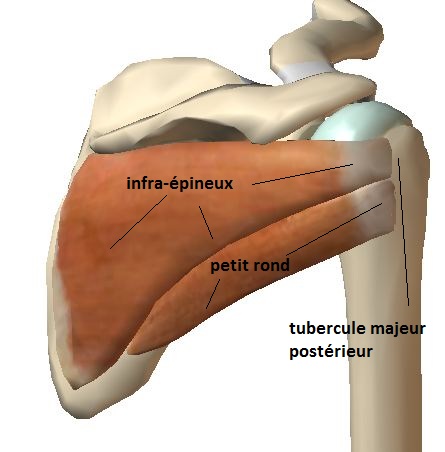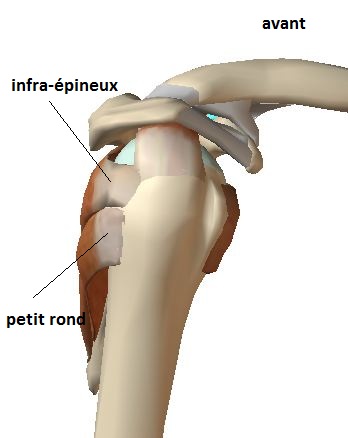The muscular portion originates at the level of the scapula (scapula) and ends with tendons on the tuberosities that surround the humeral head. During movement, the fixed point is the scapula and the mobile bone is the humerus (the arm).
The rotator cuff appears complete or continuous and in intimate contact with the articular capsule in depth, however there is a zone devoid of tendons between the sub-scapular and the supraspinous called rotator interval (which is frequently opened during a repair rotator cuff under arthroscopy).
In addition, the edges of the sub-scapular and supraspinous tendons delineate a passage opening of the tendon of the long portion of the biceps called the bicipital groove situated in a depression limited by the bony tuberosities of the humerus.
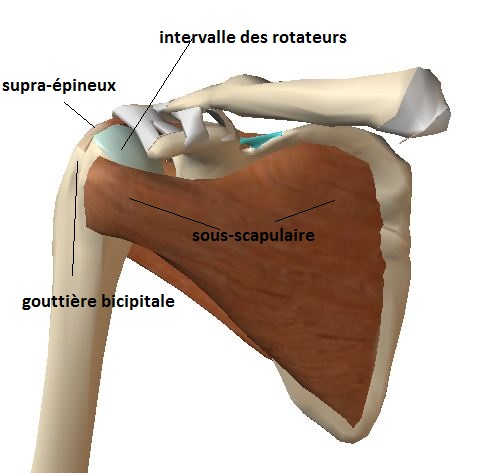
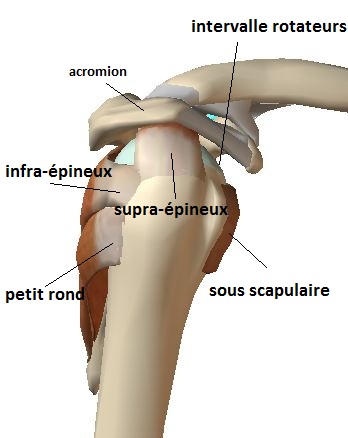
There are 4 muscles, 4 tendons:
the subscapularis muscle forward
supra-thorny muscle (supraspinous) above
intraspinous (infraspinous) muscles and small round back
The subscapularis is the anterior muscle of the rotator cuff.
Otherwise called ‘subscapularis’ in Latin
(= international non-proprietary name)
Located in front of the scapula, the subscapularis is a powerful muscle from the front fossa of the body of the scapula (flat and thin part) and is inserted by its tendon on the minor tubercle (trochin) styling in front of the head humeral.
The tendon is divided into two parts (upper and lower).
Its innervation is ensured by 2 nerves coming directly from the brachial plexus (upper and lower)
he is an internal rotator (hand in the back, for example) and a front stabilizer of the humeral head (contraction at his ascent and anterior subluxation).
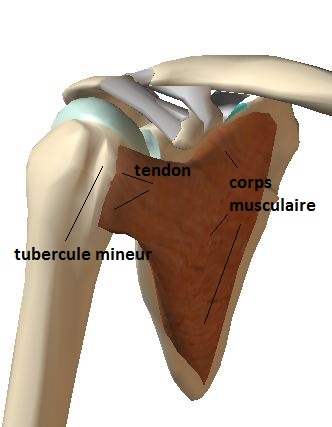
The supraspinous is the superior muscle muscle of the rotator cuff.
Otherwise called ‘supraspinatus’ in Latin
(= international non-proprietary name)
This muscle occupies the supraspinous fossa behind the body of the scapula.
it is inserted by its tendon on the anterior part of the major tubercle, situated above the humeral head and under the anterior part of the acromion.
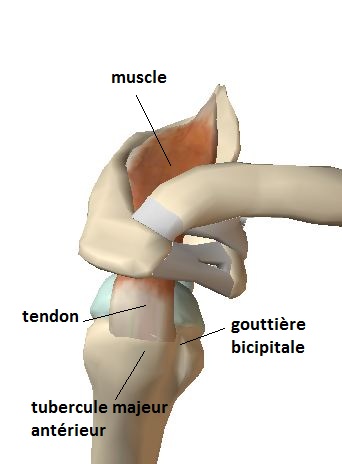
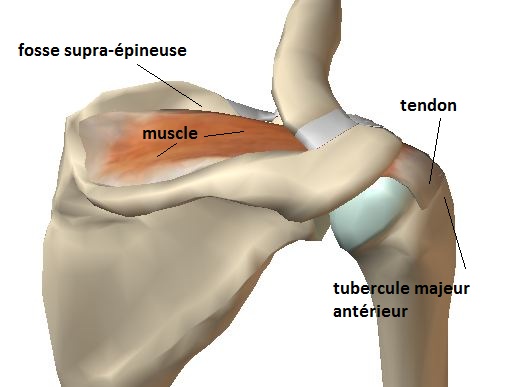
he is a ‘choke’ of the abduction (lateral elevation of the arm) before the relay is taken by the deltoid.
It helps maintain a significant acromial space height
= centralizing effect of the humeral head with respect to the scapula.
Its tendon has an intimacy with the intra-articular portion of the long biceps tendon.
it constitutes the posterior limit of the bicipital groove.
The majority of ‘tendonous wear’ (degenerative ruptures) concern the supraspinous tendon.
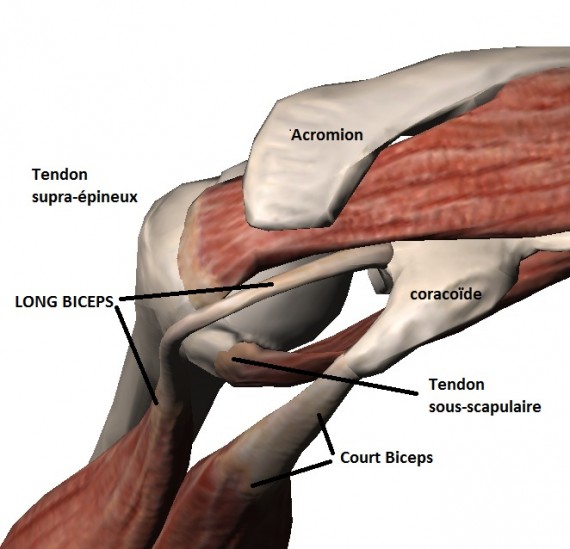
The infraspinatus is the posterior muscle of the rotator cuff. The small circle is located at its lower part.
Otherwise called ‘infraspinatus’ and ‘teres minor’ (small circle) in Latin (= international naming)
They occupy the infraspinous fossa behind the body of the scapula
They are inserted by their tendons on the back part of the major tubercle, they are external rotators (spread of the hand from the axis of the body, bring the hand to the mouth without the hand stumbling on the stomach for example) and rear stabilizers of the humeral head.
Although they are very close anatomically and in their function, they do not have the same innervation.
The infraspinatus is innervated by the supra-scapular nerve.
The small circle is innervated by a branch of the axillary nerve.

